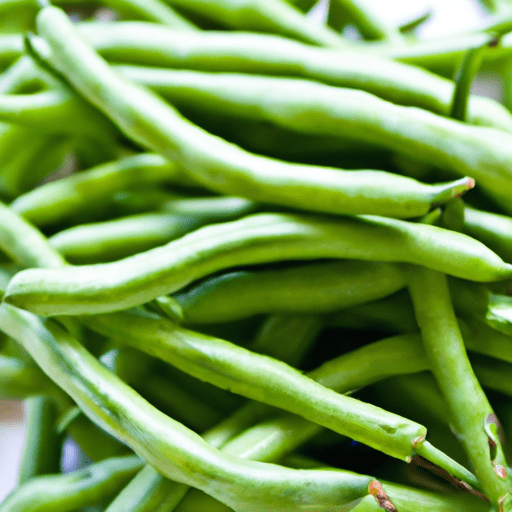Fresh String Beans: A Delightful Addition to Your Plate
Fresh string beans, also known as green beans or snap beans, are a versatile and delicious vegetable that deserves a place in every kitchen. These vibrant, crunchy, and tender beans add a burst of freshness to any dish. In this blog post, we will explore the taste, common uses, nutritional value, and some interesting history and facts about fresh string beans.
Taste and Texture
Fresh string beans have a unique taste that is both earthy and subtly sweet. When cooked, they retain their crispiness, providing a satisfying crunch to every bite. Whether they are steamed, sautéed, roasted, or stir-fried, green beans offer a delightful balance between tenderness and firmness.
Common Uses in Cooking
Fresh string beans are incredibly versatile and can be used in a variety of dishes. They are often a staple in stir-fries, salads, soups, and stews. Their ability to hold up well in different cooking methods makes them a fantastic addition to casseroles, pasta dishes, and even pickled recipes. Green beans are also commonly blanched and served as a refreshing side dish or added to grain bowls for an extra burst of color and nutrients.
Nutritional Value
Not only do fresh string beans taste great, but they also provide a host of nutritional benefits. These vibrant green veggies are low in calories and fat while being packed with essential vitamins and minerals. A one-cup serving of cooked green beans contains approximately 44 calories and is an excellent source of dietary fiber, vitamin C, vitamin K, and folate. They also contain antioxidants that help fight inflammation and support overall health.
Interesting History and Facts
Origin: Fresh string beans are native to South America and were introduced to Europe by Spanish explorers in the 16th century. From there, they made their way to North America.
Varieties: There are several varieties of fresh string beans, including the common green ones, as well as yellow and purple varieties. The color variations not only add visual interest to meals but can also indicate different nutrient profiles.
Stringless Beans: Modern varieties of fresh string beans are often stringless, meaning there is no need to remove the fibrous strings along the sides. This makes preparation even easier and more convenient.
Grow Your Own: Fresh string beans are relatively easy to grow in home gardens. They thrive in warm climates and can be harvested within a few weeks of planting. Growing your own green beans allows you to enjoy the freshest, most flavorful produce possible.
Preservation: Fresh string beans can also be preserved through canning or freezing methods, allowing you to enjoy their deliciousness year-round.
So next time you’re in the mood for a vegetable that adds both taste and texture to your meals, reach for some fresh string beans. Whether you incorporate them into a stir-fry, roast them as a side dish, or toss them in a salad, their vibrant color and satisfying crunch are sure to impress your taste buds. Enjoy the deliciousness and nutritional benefits that these delightful beans bring to your plate!
Fresh String Beans
Origin: String beans, also known as green beans or snap beans, originated in South America. They were cultivated by the ancient Mayans and Incas and were later introduced to Europe by explorers in the 16th century.
Common Uses: Fresh string beans are versatile and can be used in a variety of dishes. They are often steamed, boiled, stir-fried, or sautéed as a side dish. They are a key ingredient in dishes like green bean casserole, salads, stir-fries, and many more.
Nutritional Benefits: Fresh string beans are low in calories and rich in several nutrients. They are a good source of dietary fiber, vitamin C, vitamin K, and folate. They also contain minerals such as potassium, iron, and manganese. Furthermore, they contain antioxidants and other compounds that have been linked to various health benefits.
Unique Properties: String beans got their name from a string-like fiber that used to run along the seam of the pod. This fiber was removed before cooking, but modern varieties have been bred to be stringless. Today, both pole beans (which require support to grow) and bush beans (which do not require support) are popular types of fresh string beans.
Historical Significance: Green beans have been cultivated and consumed for centuries. They were highly regarded by the ancient Romans and Egyptians, who used them medicinally. In ancient China, it is said that Confucius was fond of green beans, and they became a symbol of filial piety. Throughout history, they have become a staple vegetable in many cultures around the world due to their availability, ease of cultivation, and nutritional value.




Use the share button below if you liked it.
It makes me smile, when I see it.